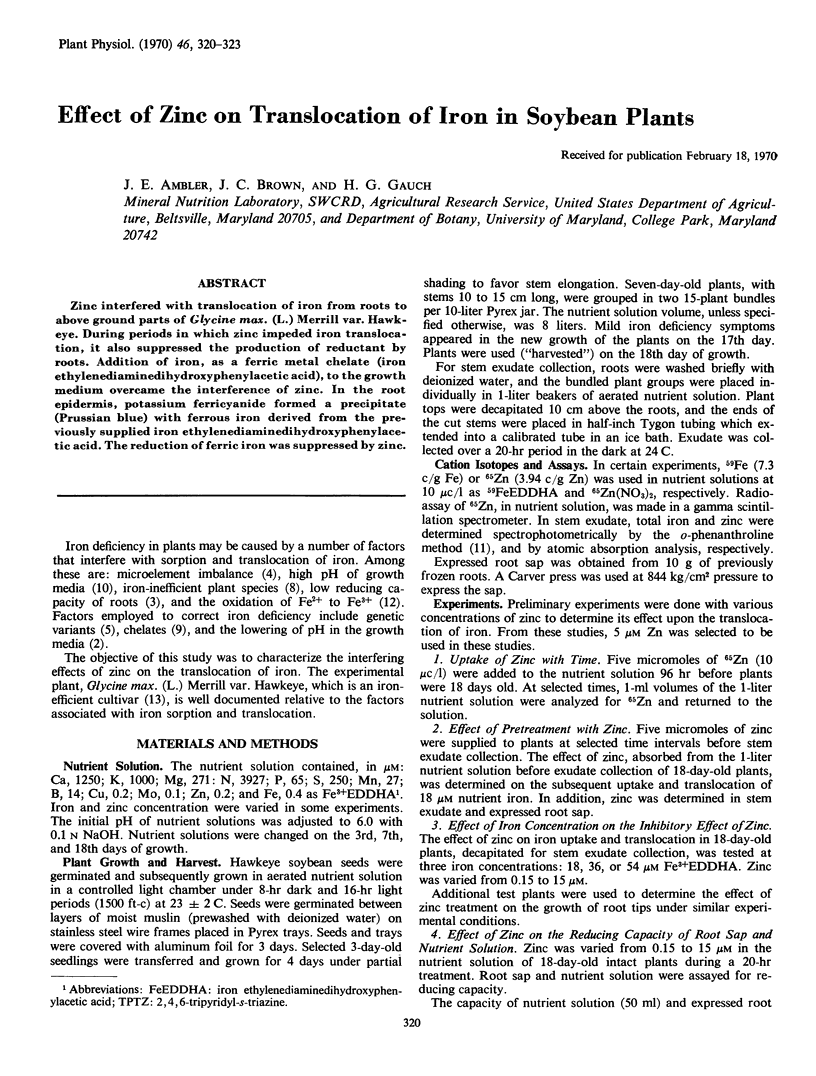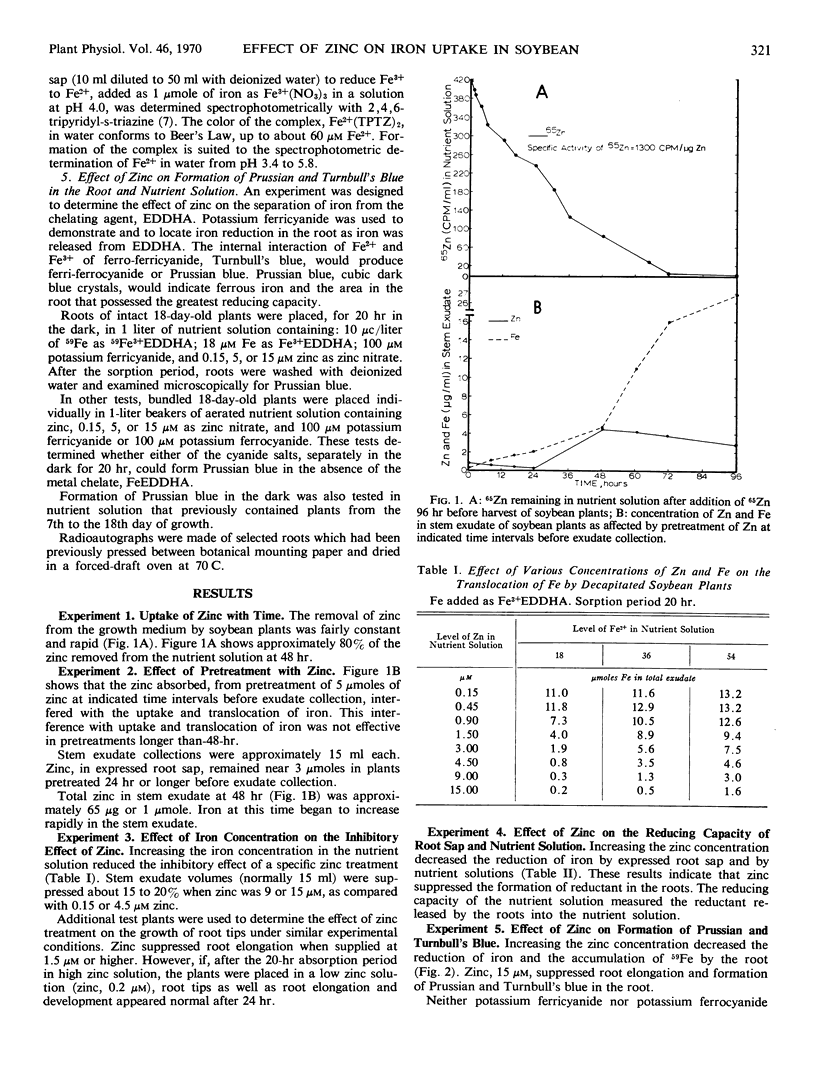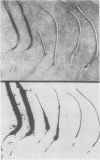Abstract
Zinc interfered with translocation of iron from roots to above ground parts of Glycine max. (L.) Merrill var. Hawkeye. During periods in which zinc impeded iron translocation, it also suppressed the production of reductant by roots. Addition of iron, as a ferric metal chelate (iron ethylenediaminedihydroxyphenylacetic acid), to the growth medium overcame the interference of zinc. In the root epidermis, potassium ferricyanide formed a precipitate (Prussian blue) with ferrous iron derived from the previously supplied iron ethylenediaminedihydroxyphenylacetic acid. The reduction of ferric iron was suppressed by zinc.
Full text
PDF



Images in this article
Selected References
These references are in PubMed. This may not be the complete list of references from this article.
- Brown J. C., Tiffin L. O. Iron Stress as Related to the Iron and Citrate Occurring in Stem Exudate. Plant Physiol. 1965 Mar;40(2):395–400. doi: 10.1104/pp.40.2.395. [DOI] [PMC free article] [PubMed] [Google Scholar]
- OLSEN C. Iron absorption in different plant species as a function of the pH value of the solution. C R Trav Lab Carlsberg Chim. 1958;31(4):41–59. [PubMed] [Google Scholar]
- Weiss M G. Inheritance and Physiology of Efficiency in Iron Utilization in Soybeans. Genetics. 1943 May;28(3):253–268. doi: 10.1093/genetics/28.3.253. [DOI] [PMC free article] [PubMed] [Google Scholar]



